 Overview
Overview
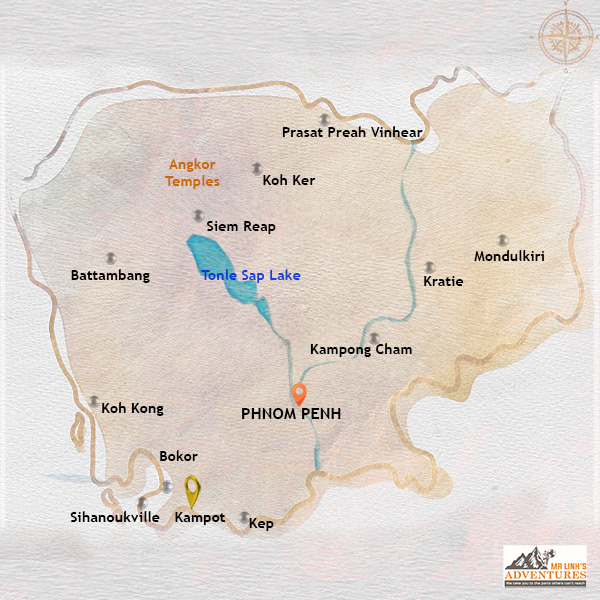 Kampot
Kampot, both a city and a province, is a captivating destination where the old-world charm of 19th-century French colonial architecture transports you to a bygone era.
Tucked at the foot of Elephant Mountains, this picturesque town is crisscrossed by the Kampong Bay River, offering new enchanting perspectives of its urban landscape. A sought-after destination for travelers in search of authenticity and a change of scenery, this charming town bordered by the Gulf of Thailand offers a unique blend of natural landscapes, colonial heritage, and local culture.
Kampot is renowned for its exceptional pepper production, tropical fruit plantations, and outdoor activities.
 Top Attractions
Top Attractions
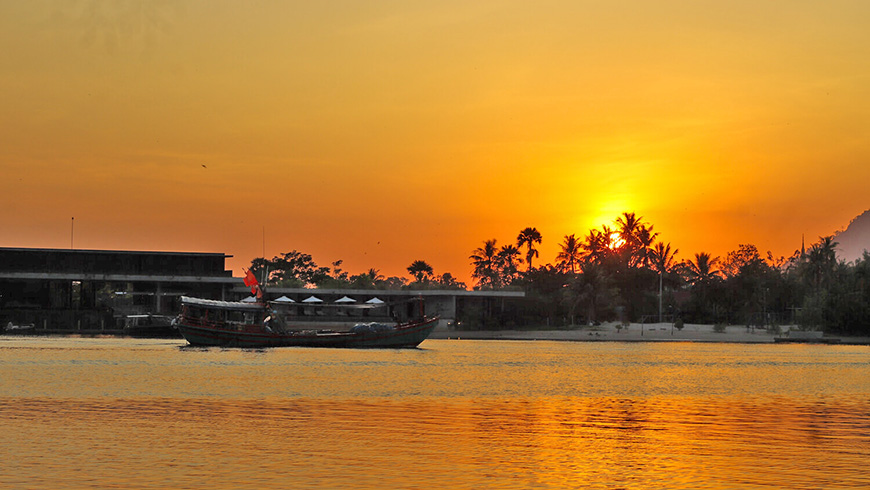 Breathtaking sunset over the Kampot River
Breathtaking sunset over the Kampot River
Must-Visit Gems of Kampot
Drift along the Kampot river
Embark on a picture-perfect boat ride down the river’s gentle curves, soaking up lush mangroves and emerald-fringed banks. Whether you’re paddling a kayak, gliding on a paddleboard or simply unwinding on a sunset cruise, this tranquil waterway promises pure serenity.
Savor the flavors at Kampot market
Step into a kaleidoscope of sights, sounds and mouthwatering aromas at Kampot Market. From sizzling street-food stalls to colorful spice vendors, every corner teems with local life. Come hungry—this is your passport to authentic Khmer treats and fresh coastal delicacies.
Explore the mystical Phnom Chhnork cave
Journey into the jungle to uncover Phnom Chhnork’s hidden wonders. Marvel at ancient stalactites, stalagmites and rock-carved shrines that whisper tales from centuries past. Adventurers, don your headlamp and get ready to be amazed by nature’s underground artistry.
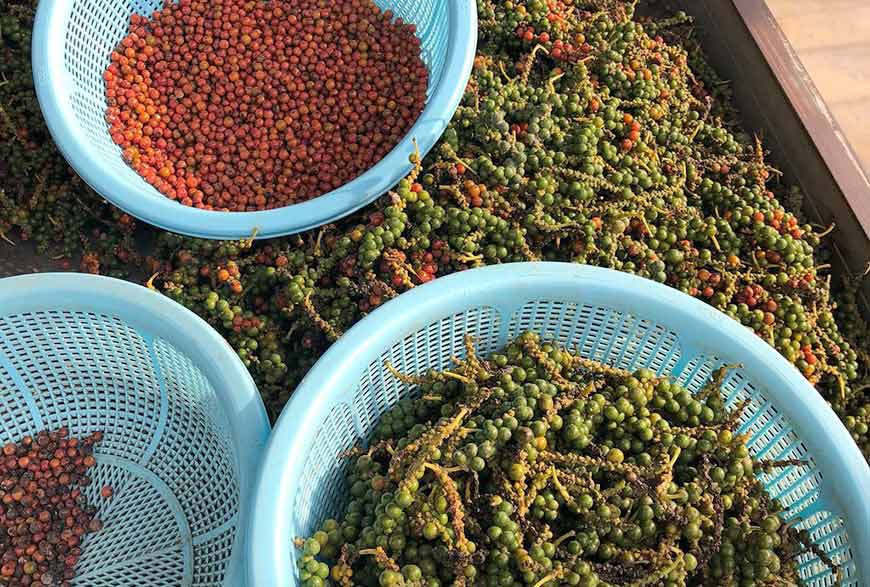 Famous pepper from La Plantation
Famous pepper from La PlantationWander a world-renowned pepper plantation
Dive into the aromatic fields where Kampot’s legendary pepper grows. Stroll between verdant vines, learn age-old harvesting techniques and taste the distinct tones of red, black and white peppercorns. It’s an edible expedition you won’t soon forget.
 See & Do
See & Do
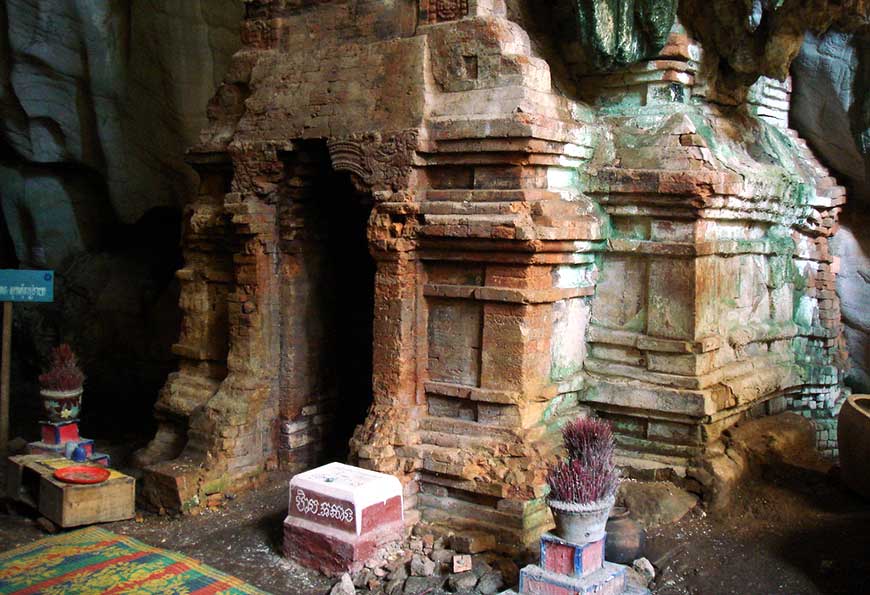 A fascinating cave temple, Phnom Chhnork is a Hindu temple dedicated to Shiva
A fascinating cave temple, Phnom Chhnork is a Hindu temple dedicated to Shiva
Kampot offers a multitude of activities for all tastes. Nature lovers can bike through rice fields and picturesque villages, hike in the surrounding mountains, or relax on sandy beaches. The more adventurous can try climbing, kayaking, or ziplining. Culture enthusiasts can visit Buddhist temples, local markets, and fishing villages.
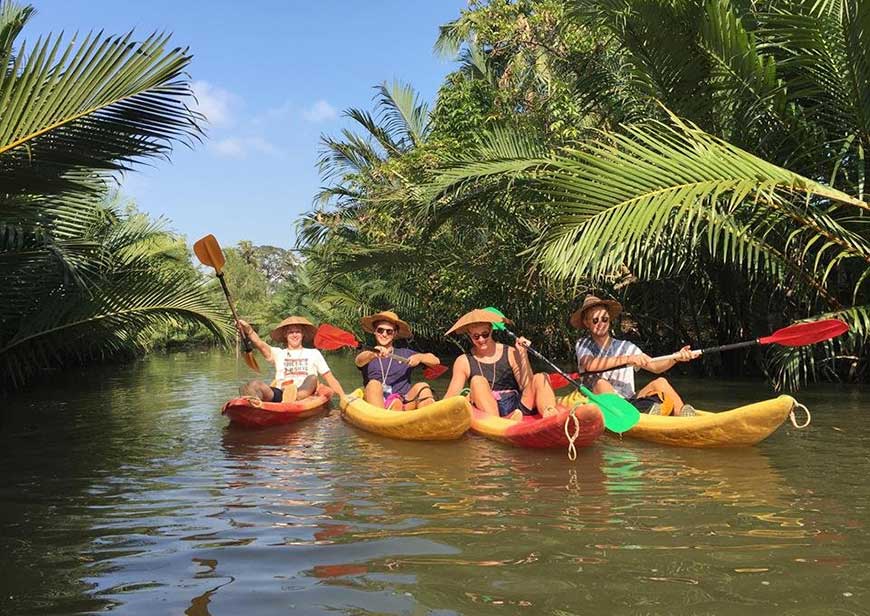 Kayaking is a popular way to discover the Kampot's surroundings
Kayaking is a popular way to discover the Kampot's surroundings
Kampot Bay River, which runs through the city, has become a paradise for water sports enthusiasts. A particularly popular option is to take an alternative tour of Kampot on stand-up paddleboards, which is a truly unique way to explore the region. It is also possible to rent kayaks in Kampot to explore the river. A bit further from the city, Green Cathedral is a popular kayaking route, named for the lush canopy under which you navigate. For those looking for longer water excursions, wooden boats take groups out for a few hours. Kampot city is also a popular starting point for boat trips to Damrei and Bokor Mountains.
For adventurers who prefer to keep their feet on the ground, a trip to Climbodia, just outside Kampot, is a must. This exceptional site offers a variety of activities for all levels, from climbing for beginners to more technical challenges for experienced climbers. You can also try rappelling down the rock walls and explore the fascinating caves of Phnom Kbal Romeas.
Discover Kampot’s hidden caves on a memorable day trip into the surrounding hills. Though lesser-known, these small caverns reward explorers with ancient monuments, intricate sculptures, and secluded shrines tucked into the mountainside. Lace up sturdy hiking boots and don protective headgear as you wander through these underground galleries and capture photos of the remarkable artwork and surprises they hold.
Other caves, open to the public, are a bit further from the city in a place called Phnom Sorsia. Visitors can explore Rung Damrey Saa ("White Elephant Cave") and another cave known for housing a bat colony, as well as a modern temple. These caves offer a unique experience with their spectacular rock formations and mysterious atmosphere.
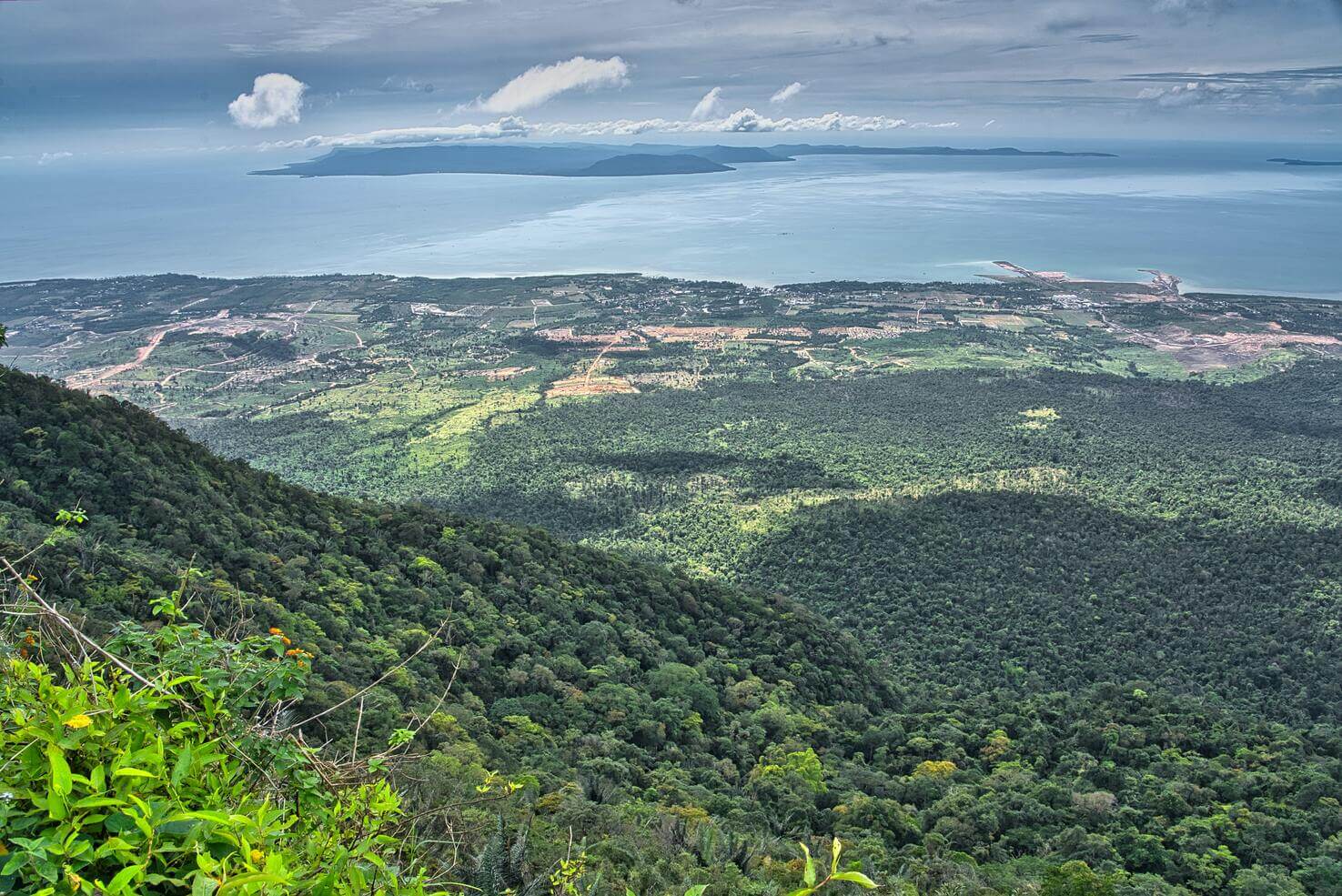 Bokor national park incorporates mountains, ruins and old French colonial settlements
Bokor national park incorporates mountains, ruins and old French colonial settlements
Preah Monivong National Park (Bokor National Park)
The western part of Kampot province consists of Preah Monivong National Park, also known as Bokor National Park, named after Bokor Mountain, the park's highest peak. It is one of the two parks protected by the ASEAN Heritage Parks program in Cambodia, showcasing its ecological wealth and exceptional biodiversity. Bokor National Park also offers numerous guided hiking and other outdoor adventure opportunities, allowing you to discover the natural beauty of the region and immerse yourself in its exceptional wildlife and flora.
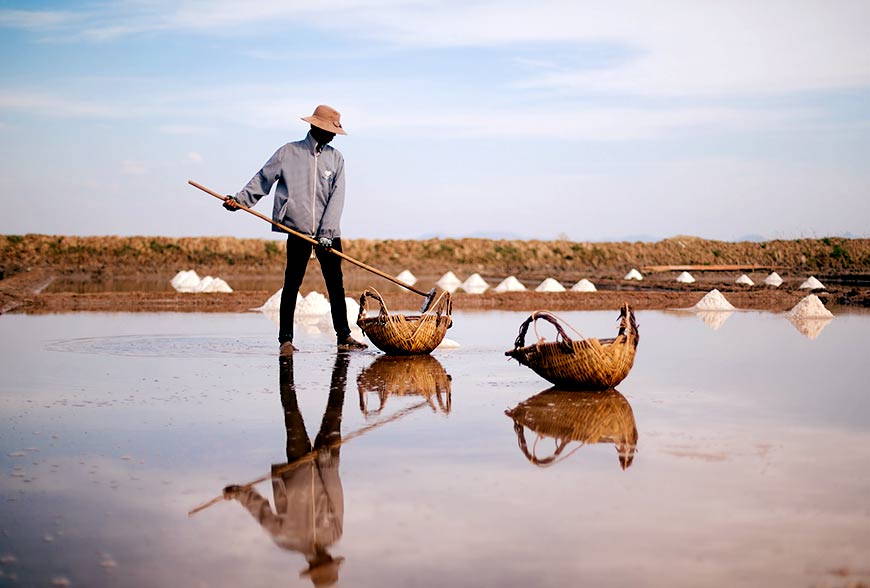 Kampot’s sea salt business is a major economic driver for local people
Kampot’s sea salt business is a major economic driver for local people
Kampot Salt Fields
Venture off the beaten track to explore the captivating salt fields that stretch across the countryside around Kampot. Here, you’ll witness generations-old salt-harvesting techniques as local farmers labor beneath the sun, raking the sparkling salt flats by hand.
Join a guided tour to uncover each step of the salt-making process and discover how this humble mineral supports the region’s economy and culture.
As you wander among the endless white pans, with golden horizons and distant mountains as your backdrop, you’ll come to appreciate the simple elegance and quiet rhythms of rural Cambodian life.
Teuk Chhou Rapids
Beat the tropical heat with a refreshing dip in the crystal-clear pools of Teuk Chhou Rapids. Nestled within lush rainforest, this natural water park is perfect for swimming, picnicking, and a leisurely day outdoors. Wade through shallow pools, sunbathe on smooth rocks, or tackle the thrilling rapids for a burst of excitement. With its tranquil atmosphere and pristine surroundings, Teuk Chhou Rapids is an ideal spot to unwind and reconnect with nature.
 Discover the Cham fishing village, where you can step into the heart of the Cham Muslim community’s traditional way of life
Discover the Cham fishing village, where you can step into the heart of the Cham Muslim community’s traditional way of life
To experience some of the local ethnic culture, visit the Cham fishing village on the outskirts of Kampot. During the day, village life is calm and dedicated to prayer and repairing fishing nets. In the evening, fishermen head out for night fishing in their colorful boats, creating a wonderful scene to witness.
 Go Green
Go Green
Mr Linh's Adventures offers tailor-made tours to discover the wonders of Kampot and its surroundings.
Embark on an adventure and explore the region's must-see sites, such as Bokor National Park, Kampot Pepper Plantation, and Kampot Market. Mr Linh's Adventure's local guides will share their passion for the region and provide you with unique and authentic experiences.
 Heritage
Heritage
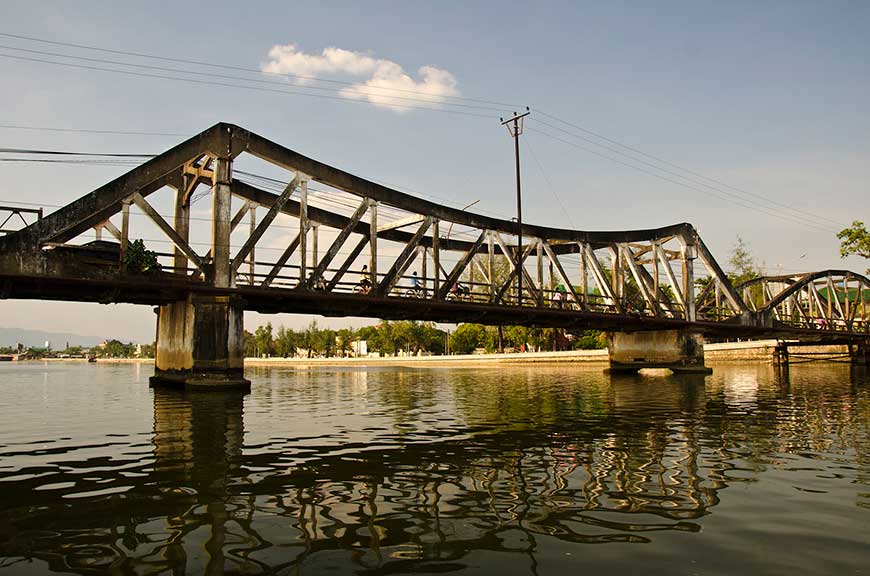 Built during French colonial times, this historic bridge has become an integral part of Kampot's identity
Built during French colonial times, this historic bridge has become an integral part of Kampot's identity
Kampot is a city where you can wander for days, soaking up its charming architecture and the atmosphere that pervades its streets and along its river. You can travel on foot, by bike, tuk-tuk, or motorcycle, depending on your mood. A walk along the water, the old quarter, and the old market are places not to be missed. Be sure to visit the old French bridge, destroyed during the Khmer Rouge era but since rebuilt and now accessible to pedestrians and two-wheelers.
While exploring Kampot, don't miss a stop at the provincial museum, located in the former governor's mansion. This museum, dedicated to the province's history, houses a collection of objects and photographs that will immerse you in Kampot's past. You will discover exhibitions on the region's history, cultural heritage, and economic development.
A short distance from Kampot city is the Hindu cave temple of Phnom Chhngok. Built in the 7th century, this marvelous cave is accessible after climbing a little over 200 steps, but the spectacle that awaits you at the top is well worth the effort. The main chamber houses a brick temple dedicated to Shiva, while the cave network also features representations of elephants and symbols of Hindu teachings. Needless to say, the view of the countryside from this height is simply magical.
 Food & Drinks
Food & Drinks
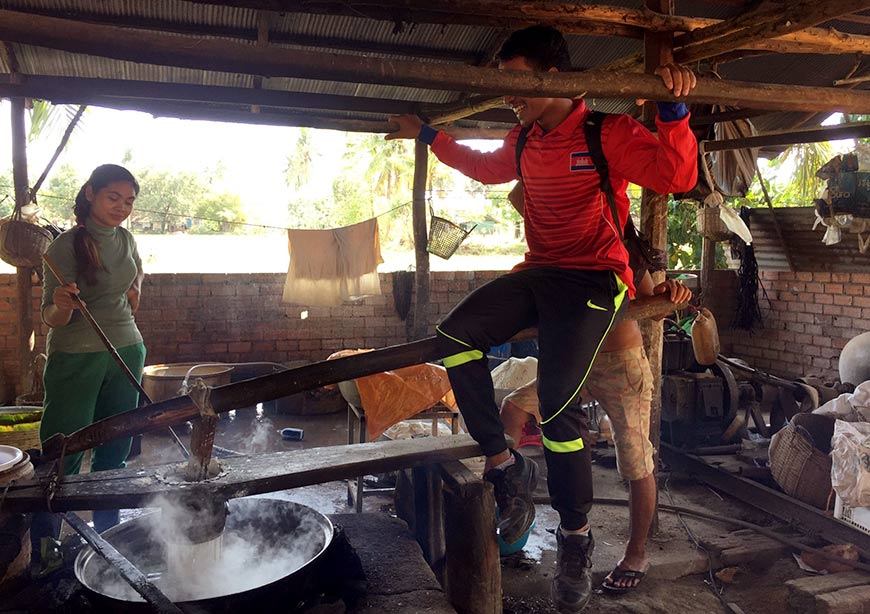 How to make rice noodles !
How to make rice noodles !
Kampot, in Cambodia, is world-renowned for its exceptional pepper. This spice, originally cultivated by Chinese settlers in the 13th century, saw increased production in the 19th century. Today, chefs worldwide appreciate the superior quality of Kampot pepper, making it a flagship product of international trade.
Pepper Plantation Visits
You can visit Kampot pepper producers throughout the region, but one of the best experiences is at La Plantation, an organic Kampot pepper farm. Here, you can discover traditional production methods, see pepper growing, and purchase some to take home. You can even take a cooking class to prepare traditional Khmer dishes using Kampot pepper as seasoning.
Beyond its famous pepper, Kampot is also a land of authentic flavors.
Kuy Teav: A beloved Cambodian noodle soup, Kuy Teav comes with a variety of toppings so you can tailor it to your taste. Fresh herbs, zesty lime, and fiery chili combine for a flavor you’ll crave again and again.
Bai Sach Chrouk: This classic breakfast dish features tender, garlic-and-coconut-milk–marinated pork grilled to perfection and served over fragrant rice. A side of pickled vegetables balances the rich, savory pork beautifully.
Fresh Seafood: Thanks to Kampot’s coastal location, the market is renowned for its seafood. Don’t miss grilled fish or prawns seasoned with local Kampot pepper—celebrated for its exceptional aroma and taste.
Desserts: Round off your meal with traditional Cambodian sweets such as Num Banh Chok (rice noodles in fish gravy), ideal for anyone looking to satisfy their sweet toot
Kampot Durian
Finally, how can we mention the flavors of Kampot without mentioning durian, the tropical fruit with a strong and penetrating smell that leaves no one indifferent? Cultivated abundantly in the region, Kampot durian is renowned for its creamy flesh and unique taste. If you dare to get past its repulsive odor, you will discover a fruit with complex and addictive flavors.
 Directions
Directions
Location
Kampot is located about 150 km south of Phnom Penh, the capital of Cambodia.
How to get there
You can reach Kampot by bus, taxi, or train from Phnom Penh.
By Bus
Buses remain one of the most popular and affordable ways to travel in Cambodia.
The bus ticket price is around 5 to 10 USD.
By Train
Train travel offers a scenic alternative to bus journeys, with a ticket price around $8-$10 per trip
The best season to visit
The best time to visit Kampot is from November to April, during the dry season.